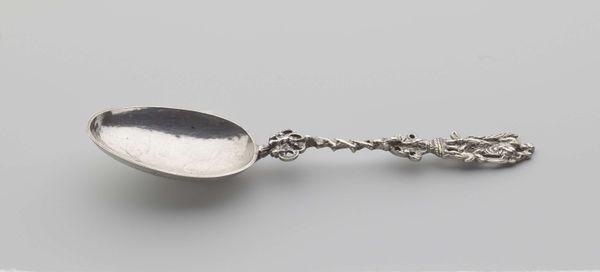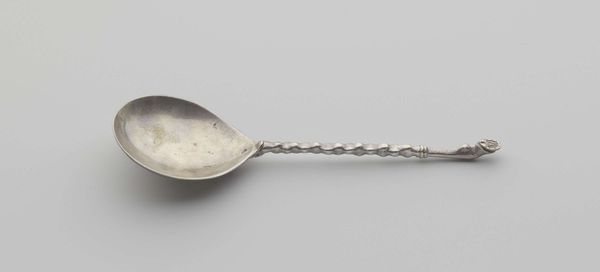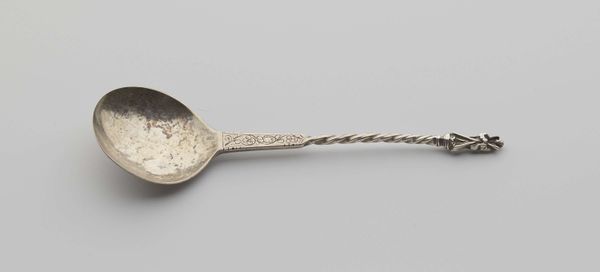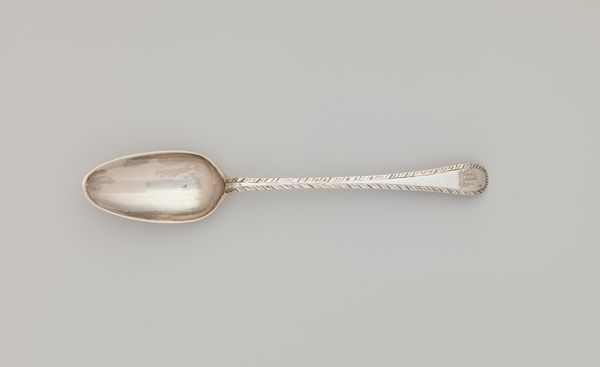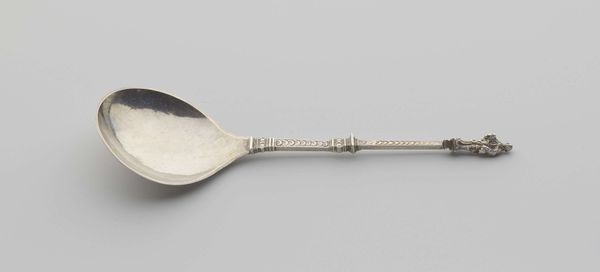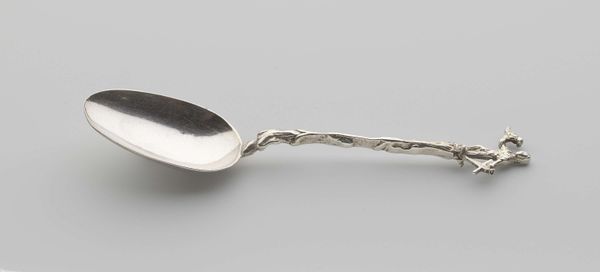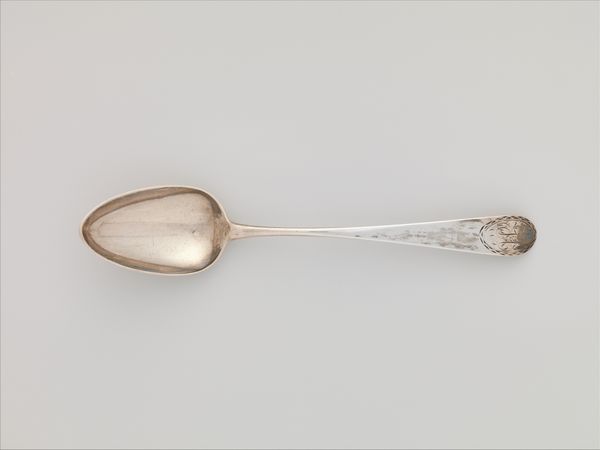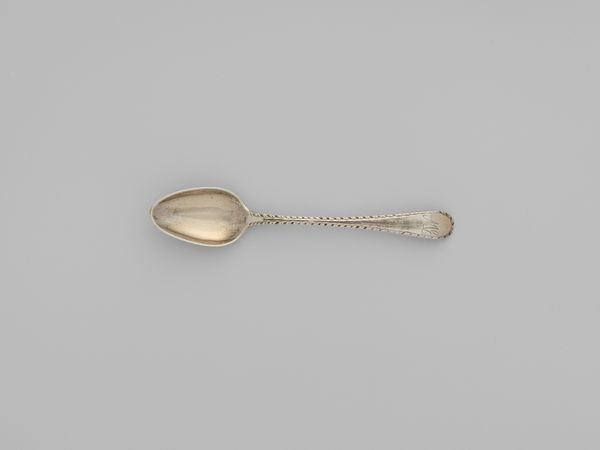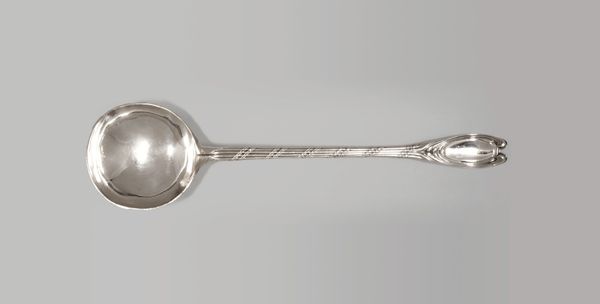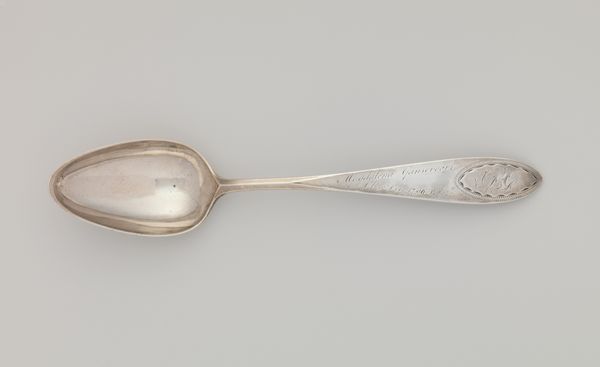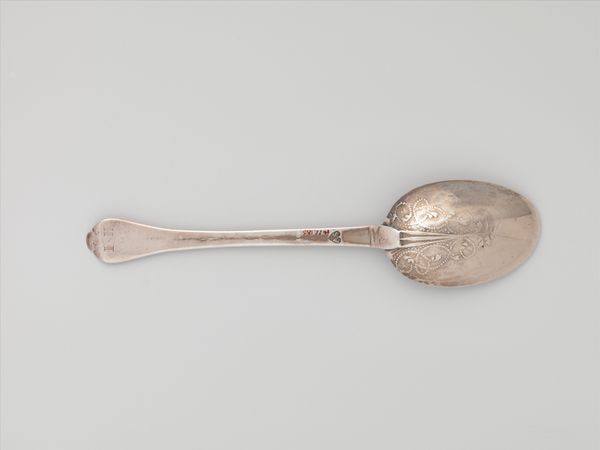
silver, metal, sculpture
#
silver
#
baroque
#
metal
#
sculpture
#
decorative-art
Dimensions: length 17.9 cm, width 4.8 cm, weight 54 gr
Copyright: Rijks Museum: Open Domain
Editor: Here we have a silver spoon made around 1760 by Jacob Helweg. It is so intricate and the baroque detailing of the handle caught my eye. I'm curious though, what significance might the Oranje-Nassau crest have had back then? Curator: The crest of Oranje-Nassau stamped into the bowl does carry substantial weight, even on such a seemingly domestic object. It speaks to the cultural memory of the Dutch Republic and the power associated with that lineage. This spoon wasn't just for eating; it was a statement. Editor: A statement of what exactly? Curator: Allegiance, aspiration, perhaps even a subtle assertion of status. In the 18th century, objects like these often became vehicles for projecting identity. How does the imagery affect your interpretation of this artifact? Editor: Well, knowing about the family helps connect the symbolism to something beyond just decoration. It makes it feel much more charged with meaning. Did owning something like this signify political leanings? Curator: Possibly, or at least an alignment with the established social order. Visual symbols operate within a specific cultural context, and for whom it would matter. But beyond overt political leanings, it's about belonging to a community, whether social or regional. How else might this blend of aesthetics and politics manifest in our lives today? Editor: That's a compelling question! Thinking about brands as a modern version of heraldry really puts it in perspective. This has made me look at it in a totally new way. Curator: And I think the combination of utility and potent imagery underscores how daily life is so subtly woven with cultural narrative.
Comments
No comments
Be the first to comment and join the conversation on the ultimate creative platform.
